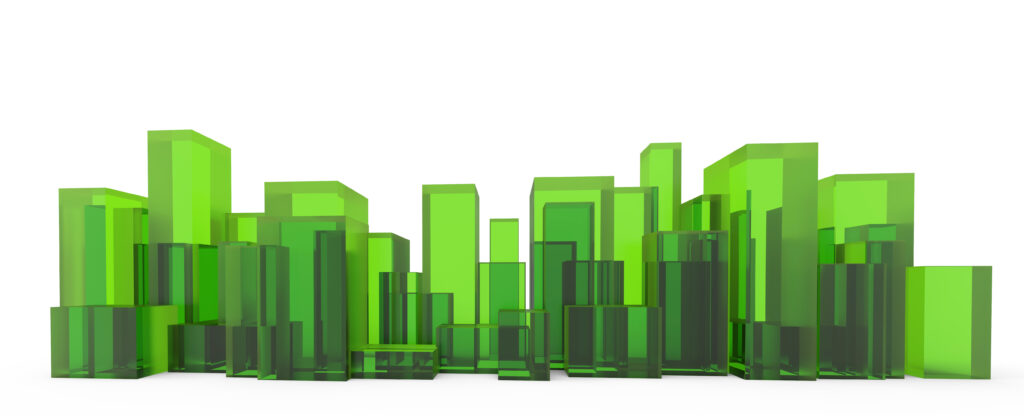Kanish Plasters Enables Green Buildings Leveraging Gypsum Plastering
Going Green is the Need of this Decade
1000s of builders leverage Kanish Plasters to enable eco friendly construction.

What is Green Building?
A green building, also known as a sustainable building, is a structure that is designed, built, renovated, operated, or reused in an ecological and resource-efficient manner. Green buildings are designed to meet certain objectives such as protecting occupant health; improving employee productivity; using energy, water, and other resources more efficiently; and reducing the overall impact to the environment.
How Does Construction Impact Environment?
The urgent need to go green in construction across India
CO2 emissions
According to an article published in Bold Business, the construction sector contributes to 25% – 40% of the world’s carbon emissions.
Pollution
Construction causes both air and water pollution. Harmful chemicals used during construction can be harmful to both workers and the environment.
Waste
The process of constructing new infrastructure produces a lot of waste that ends up in landfills.
Depletion of Fossil Fuels
The construction process requires the burning of fossil fuels which we know is not unlimited.
Energy use
The newly constructed buildings use energy which can add to the negative impact on the environment.
Harming wildlife
During construction, clearing vegetation and excavating can destroy wildlife and habitats.
What Can India do to minimize the impact?
Designing sustainable construction projects
Increasing the energy efficiency of buildings
Using sustainable building materials
Setting emission reduction targets
Minimizing the discharge of pollutants
How Gypsum Plaster helps in Green Buildings
Gypsum plasters to make Green Building India, a reality.
Plasters make up to about 10% of materials used in the construction industry. By replacing the sand cement plasters with gypsum plasters, which are made from naturally occurring minerals, builders can achieve the target of green building India, in real time.
Gypsum is an eco-friendly mineral
Gypsum is a naturally occurring substance deposited within the layers of the sedimentary rocks due to the evaporation of lakes and seawater. On the other hand, the cement industry contributes to 8% of global carbon dioxide emissions and is an energy-intensive industry. Gypsum plastering is a viable alternative to cement plasters in achieving the mission of Green Building India.
Gypsum Plasters reduce sand requirement in construction
The National Green Tribunal has issued restrictions on illegal sand mining in the river beds across the country. The reduced availability or non-availability of sand has increased the cost of sand as well as the time required for the completion of the building construction. Though there are alternatives like M-sand, there are several problems associated with quality. The finish is coarse and inconsistent, requiring application of putty. Thus, gypsum plasters are a replacement to sand plasters and fast forward the mission of green building India.
Gypsum plasters reduce electricity and fuel consumption.
The process of generation and transmission of electricity is an essential contributor to greenhouse gas emissions. Cement production consumes significant amounts of fossil fuels which in turn add to the carbon footprint and greenhouse gas emissions. On the other hand, gypsum plasters and the plastering service reduce the consumption of electricity as the process accelerates the building construction by reducing complications involved eventually leading to green building India.
Gypsum Plasters reduce consumption of water in building construction
Sand cement plastering demands that it is sprayed and cured with water for at least 7 days post its application. This ensures that the plaster settles down and produces a smooth finish, otherwise it may result in cracks due to sudden drying of the sand cement plaster. Our study reveals that gypsum plastering saves around 30 liters of water per sq. ft when compared to sand cement plastering. Gypsum plastering reduces water usage and prevents exploitation of water bodies making the dream of green building in India, a reality.
Gypsum plasters are recyclable
Gypsum plasters are completely recyclable unlike other construction materials like cement that are hard to be recycled. Gypsum plasters are obtained by heating gypsum rock. The native form can be restored when the gypsum plaster is mixed with water again.
Setting Gold Standards for Wall Plastering
Kanish Plasters is not only leading gypsum plastering saga in India, our we are also defining the gold standards of plastering.
Contact Us
Kanish Plasters The emerging plastering solution
peed up your construction using gypsum plasters and don’t be left behind








Our Projects across India talks about the reputation we shoulder From villas to townships to government buildings
Kanish Plasters mission is to revolutionize the Indian Construction Industry using Gypsum Plastering

Government Buildings
Where accelerated construction, faster closing of projects, reduced cost, yet a high-quality service is an imperative.

Educational Institutions
That demand timely completion of the project with plasters that have perfect acoustics and exhibit resistance to wear and tear
Hospitals
Easy cleaning and maintenance, disinfectant properties, faster construction, corrosion resistance of gypsum plastering makes it a go-to for hospitals.
Commercial Buildings
Hotels, schools, malls, and other shopping complexes that require quicker completion of projects with materials that are resistant to sound, fire, and easy to maintain.

Township and Villas
Signature villas, infrastructure development, and housing projects that demand superior finish, elegant interior designs, leveled walls, and excellent thermal-acoustics properties.
